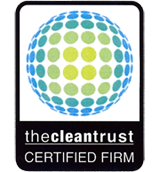IICRC Water Damage Restoration Technician 
This IICRC-accredited Water Damage Restoration Technician (WRT) course is designed to provide basic education for technicians and other materially interested parties in the science and practice of water damage restoration. This course will cover extraction, basic containment and basic mold procedures. This course is designed to teach non-restoration personnel that perform remediation work to give them a better concept of water damage, its effects and techniques for drying of structures. This course will give residential and commercial maintenance personnel the background to understand the procedures necessary to deal with water losses, sewer backflows and contamination such as mold.
Structural and Commercial Drying
While there are many methods for drying structural components and contents, the “in-place” drying system has been taught in the industry and used by drying contractors since the early ’80s. In those days, this method of drying components, without significant removal of furnishings or fixtures, was somewhat restricted, due to limitations imposed by extraction, evaporation and dehumidification equipment. In recent years, however, drying technology (extraction, evaporation, dehumidification), along with better understanding of psychrometry, has advanced in major ways so that in-place drying has, in some cases, become far more safe and practical.
Fire and Smoke Restoration 
The fire trucks may be gone but without proper immediate response, the real damage and the costs are just beginning. To return your residential or commercial property to its pre-loss condition requires professional restoration. This is not the job for a do-it-yourself property owner.
For results you can have confidence in, the IICRC recommends hiring a certified restoration firm. Restoration to a property can be complex. Proper smoke and odor removal are tasks that require technicians certified in these specific areas.
When selecting a certified restoration firm several factors must be considered:
- Formal and up-to-date specialized training
- Health and safety certifications
- Experience in a wide range of restoration projects
- Proof of proper insurance and licenses
Fire And Water Damage Restoration Certified Firm
- Sewage is one of the most dangerous substances to enter homes or buildings. It contains fungi, bacteria and viruses, many of which are disease-causing. Unfortunately, many people fail to understand the hazards that sewage presents, particularly for the very young or very old, or for those with compromised immune systems or respiratory problems.The IICRC complied guidelines for professional sewage clean-up called the Standard for Water Damage Restoration (S500).Here are the key principles homeowners should know about sewage back-ups:
- Sewage contains a variety of pathogenic – disease causing – fungi, bacteria, viruses and parasites. Anyone who works on sewage losses must have updated vaccinations, including one for Hepatitis B.
- Sewage exposure is particularly dangerous for people with weakened immune systems, including anyone under two or over 60, those who are pregnant, ill, recovering from surgery, on prescription drugs or chemotherapy, or are AIDS victims.
- It is not safe to stay in a building that’s flooded with sewage unless the contaminated area can be completely sealed off and placed under controlled air flow so that there will be no cross contamination of unaffected areas.
- Highly absorbent sewage-saturated materials, such as carpet, pad, upholstery, bedding, wicker, paper or even fabrics that can’t be washed in hot water (130°F/54°C) for at least 10 minutes, must be contained and disposed of properly. This goes for sewage-saturated drywall, insulation and several other structural materials too. There’s simply too great a health risk involved if any of these materials are dried in place and cleaned only.
- Only the most highly trained professionals should attempt sewage remediation work. Then, a “third party” indoor environmental professional can provide post-remediation verification or “clearance testing” to ensure that the home or building is safe to re-occupy.
- Carpet Cleaning
- Carpet Color Repair
- Carpet Inspection
- Carpet Repair and Reinstallation
- Commercial Carpet Cleaning
- Fire and Smoke Restoration
- Hard Surface Cleaning
- Hard Surface Inspection
- House Cleaning
- Leather Cleaning
- Mold Remediation
- Odor Control
- Rug Cleaning
- Structural and Commercial Drying
- Upholstery and Fabric Cleaning
- Water Damage

-
